Millennial Makeover for Delhi's Popular Sarojini Nagar
Reusable cloth bags, a photo friendly Graffiti Lane, and curated online stores have all added to the revival
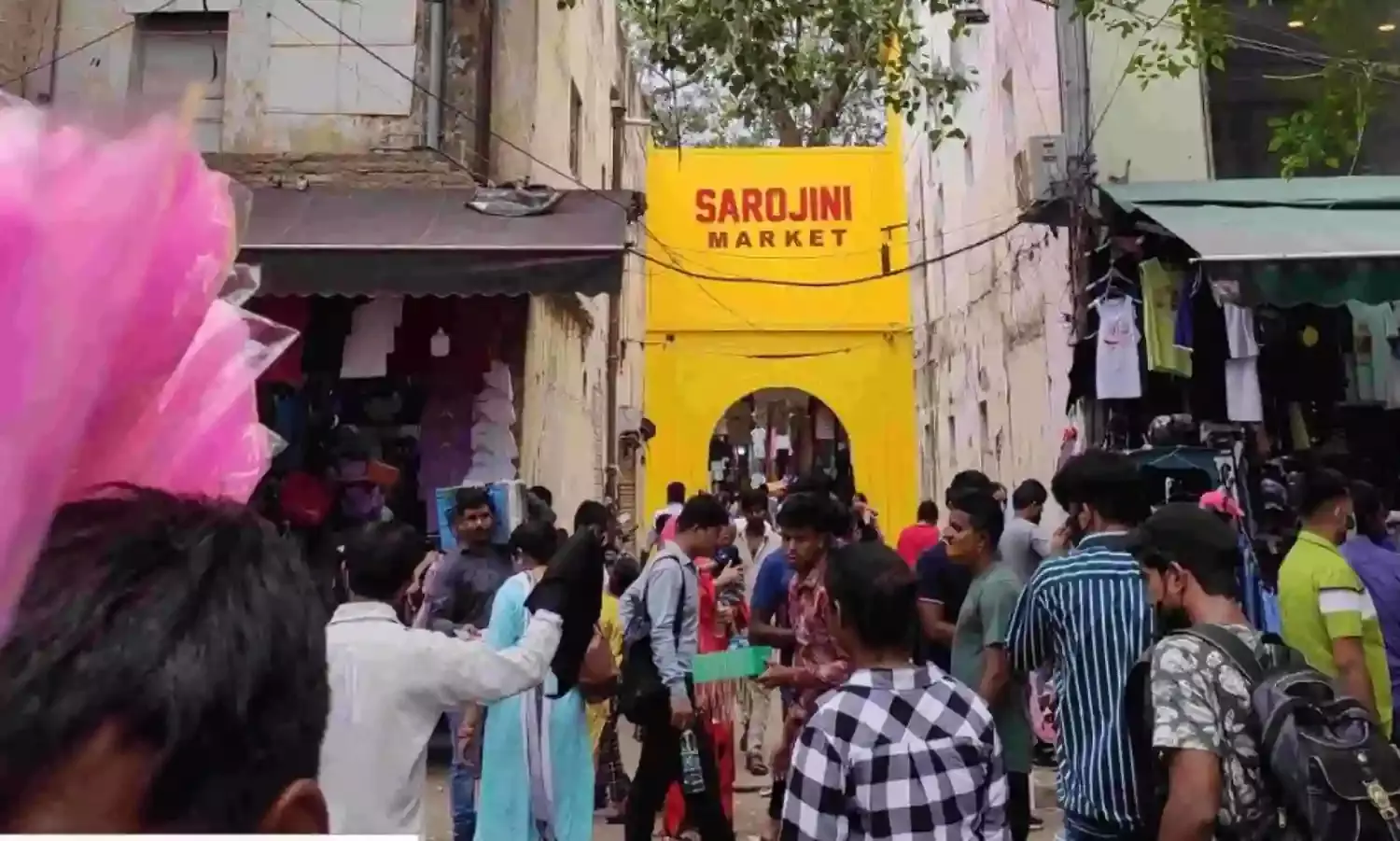
Located in one of the endless, multiple narrow lanes of Delhi's Southwest district is the famous Sarojini Nagar Market. Established in the 1950s, it catered to the daily requirements of the locals. Today, the market is known as a 'fashion hub' for those looking for the latest trends with an affordable price tag. From clothes and accessories, to home decor and kitchenware, hundreds of shops and another hundred or so hawkers offer it all.In the wake of the Covid-19 outbreak, the usual sounds and sight of sellers shouting their discount offers inviting buyers to their shops and buyers enjoying a healthy bargain, all came to a stall and business witnessed a drop. As the pandemic peaked and lockdowns were announced, vendors, most of who hailed from Uttar Pradesh and Bihar, went back to their homes, Sarojini Nagar market was vacant and quiet.
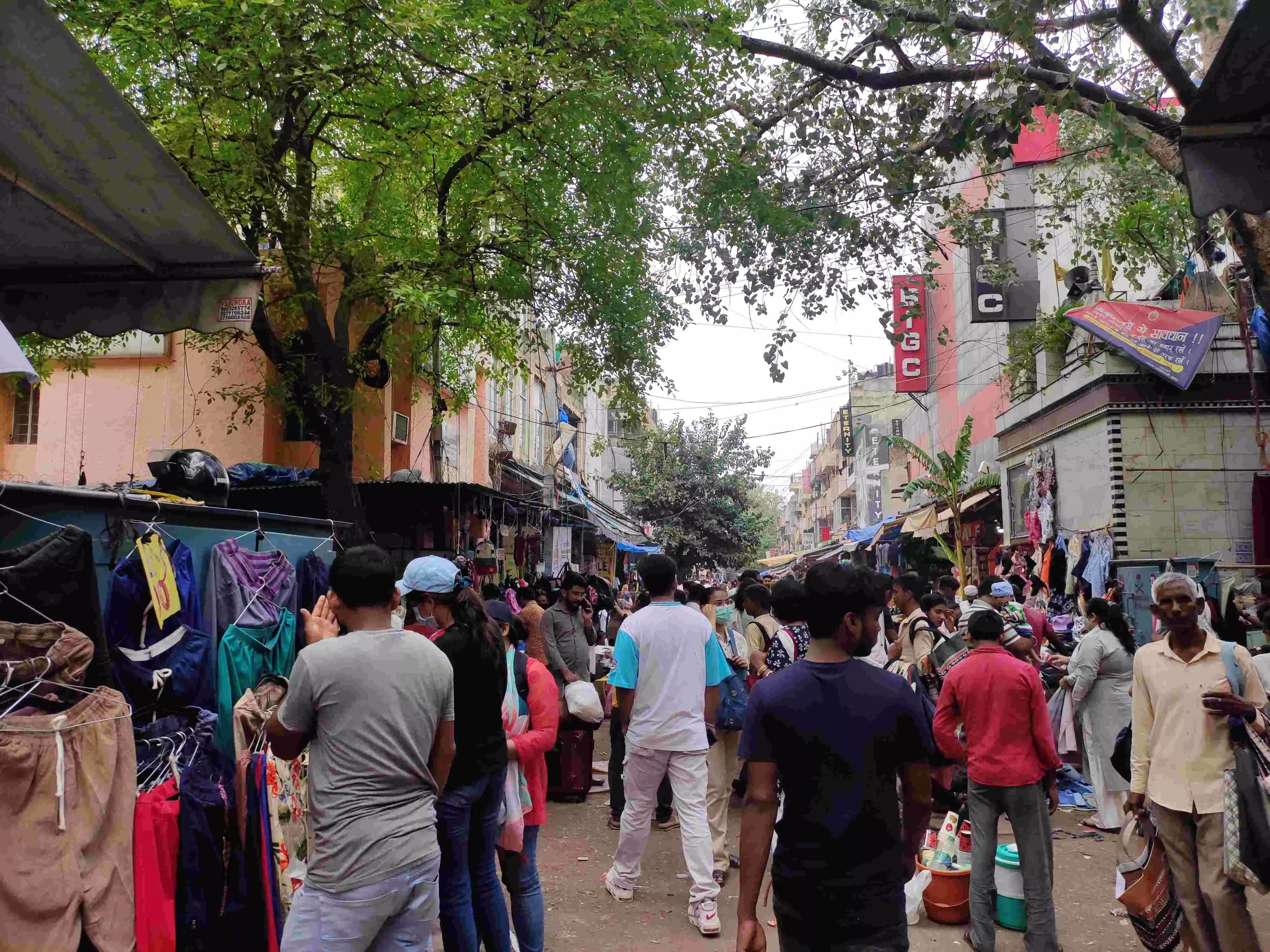
Yashwant Pal, a seller who hails from Banaras, recalled, "during, and after the lockdown, we followed the protocols and operated on the basis of an 'odd-even' system. We continued to set up our shop and made do with whatever we earned, but some sellers also went back home because of the virus threat and meagre sales". While for some following the government mandate was a must, for others saving their lives and protecting themselves and their families was a priority. After the lockdown when things started opening up, many sellers like Yashwant sold just 10-20 pieces a day but it still meant a lot to them because they were at least earning something.
Despite all the odds and challenges, the sellers of Sarojini Nagar continued and still continue to work hard and strive as this place helps them earn their bread and butter. Sachin, a seller hailing from Delhi, calls this market his 'extended family' and said, "this market is of immense importance for me and I value it a lot. It has not only offered me a source of employment and income generation, but has also opened several doors of opportunities for me". Sachin sells tops and t-shirts in the market and hasn't been here for too long. However, his love for the market is not bound by the number of years he has been there.
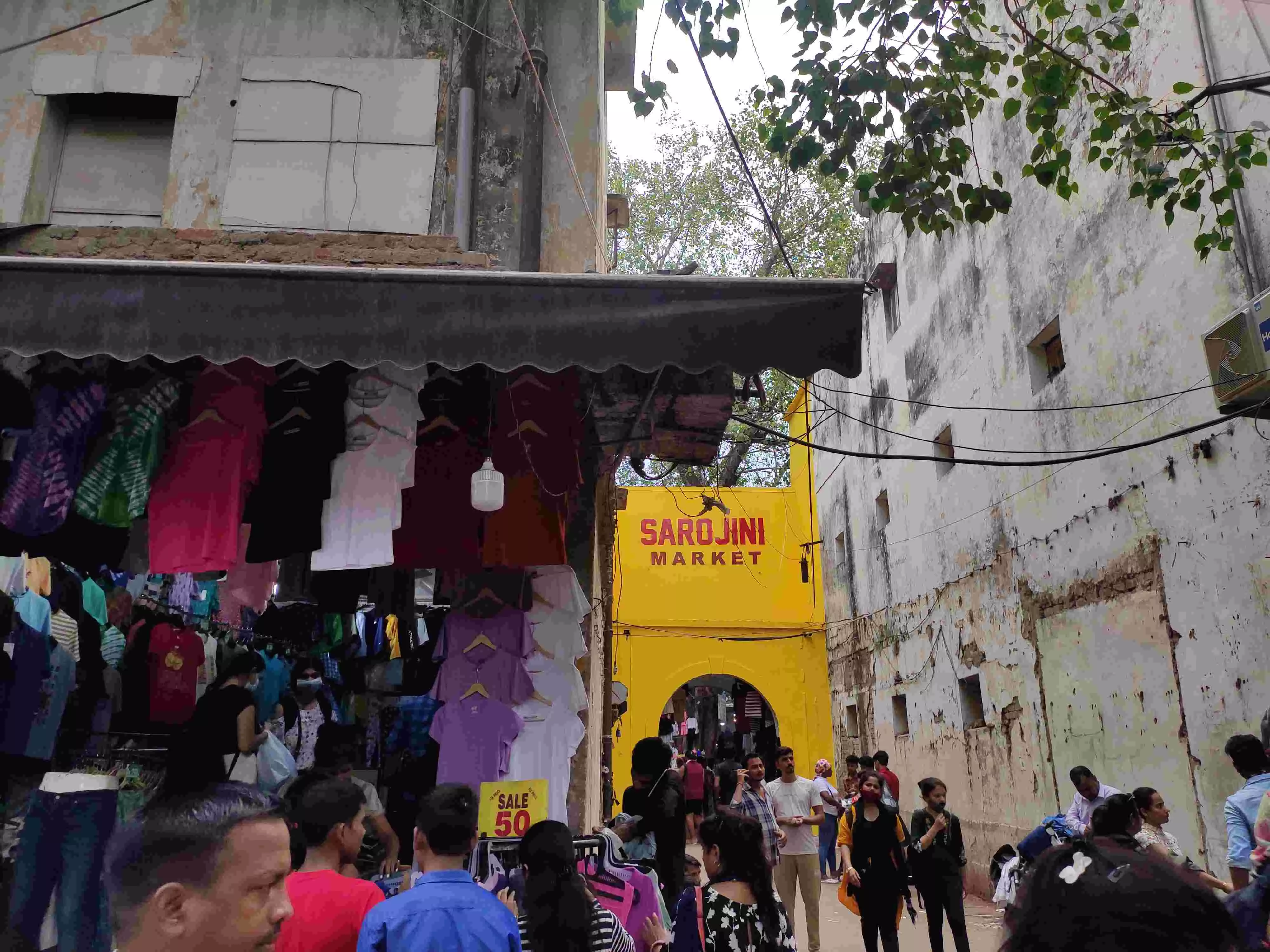
"For us, there's no better place than this market and it is like an extended family for us", he said. Yashwant agreed and shared that while on some days he earns well, on other days he doesn't but he is still very satisfied and content. "This market is my place of work and it means the world to me," he said.
Sarojini Nagar market has been a witness to many changes over 70 years of its existence. The most significant, rather noticeable change has been the post pandemic. "Due to the pandemic, many vendors started selling online", said Yashwant, "many sellers had gone back to their villages, and selling online was the only way out".
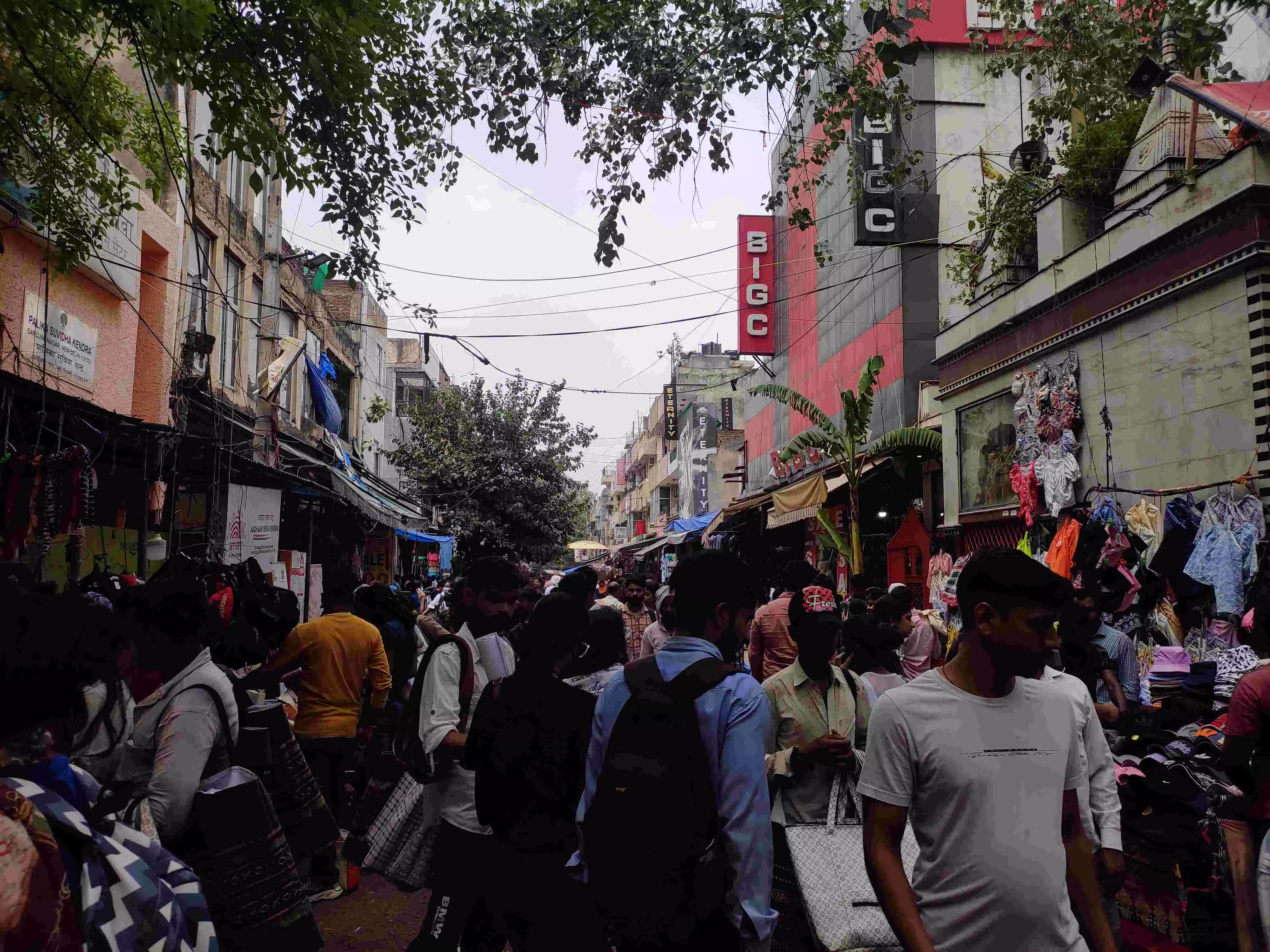
Additionally, several thrift stores and online shops also came into being and many people started buying and selling Sarojini Nagar clothes online. According to Yashwant, "people who have started their own thrift stores and online shops buy the clothes and accessories from us in bulk. They pay us good prices for the clothes and buy all our stock without much negotiation, and then sell it to the buyers online". He believes that because of digitisation of the market and easy online availability of the seller's goods, they are able to earn a decent living, help and support their family.
One such online store was the Sarojini Market Online, the brainchild of Vandit Chawla. It started as an Instagram page, and now has a functional website too. "We started Sarojini Market Online in August 2020 to help the vendors with the sales since the market was shut. Because of the virus threat and lockdowns, the sellers were not able to earn and even after the market reopened, the customer footfall was very low," said Chawla.
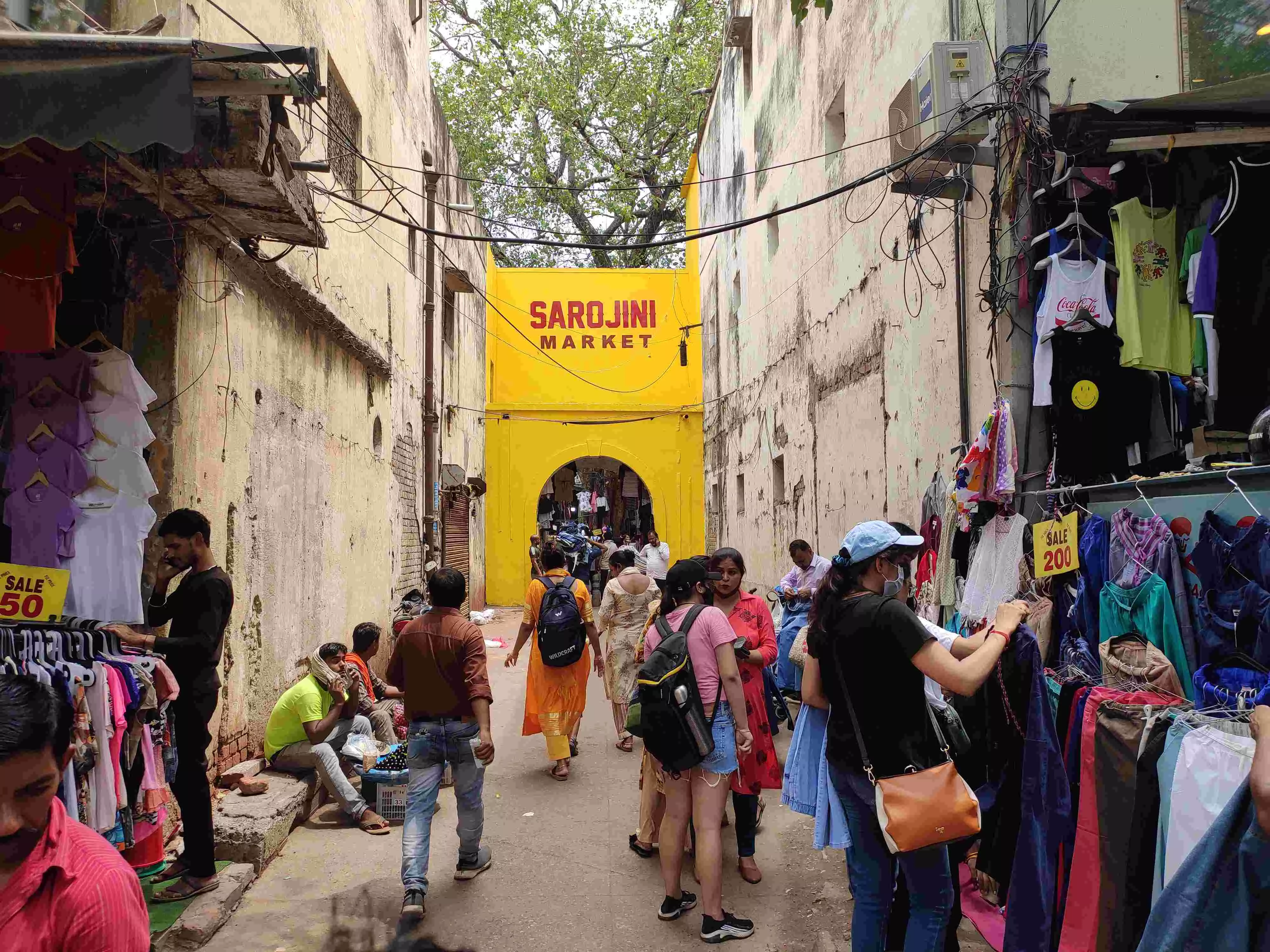
Born and brought up in the vicinity of the market itself, he was a witness of the impact that pandemic had on the sellers as they lost their only source of earning. So as an effort to help them come back on track and to make Sarojini Market Nagar's collection accessible to all, he started handpicking the products from the vendors and selling them online.
However, ever since the inception of such online stores 2020 onwards, a debate has surfaced around how owners of these stores are earning profits unethically by selling the clothes and pieces they buy from the market at a higher price. The workers, on the other hand, hold a different opinion on this altogether.
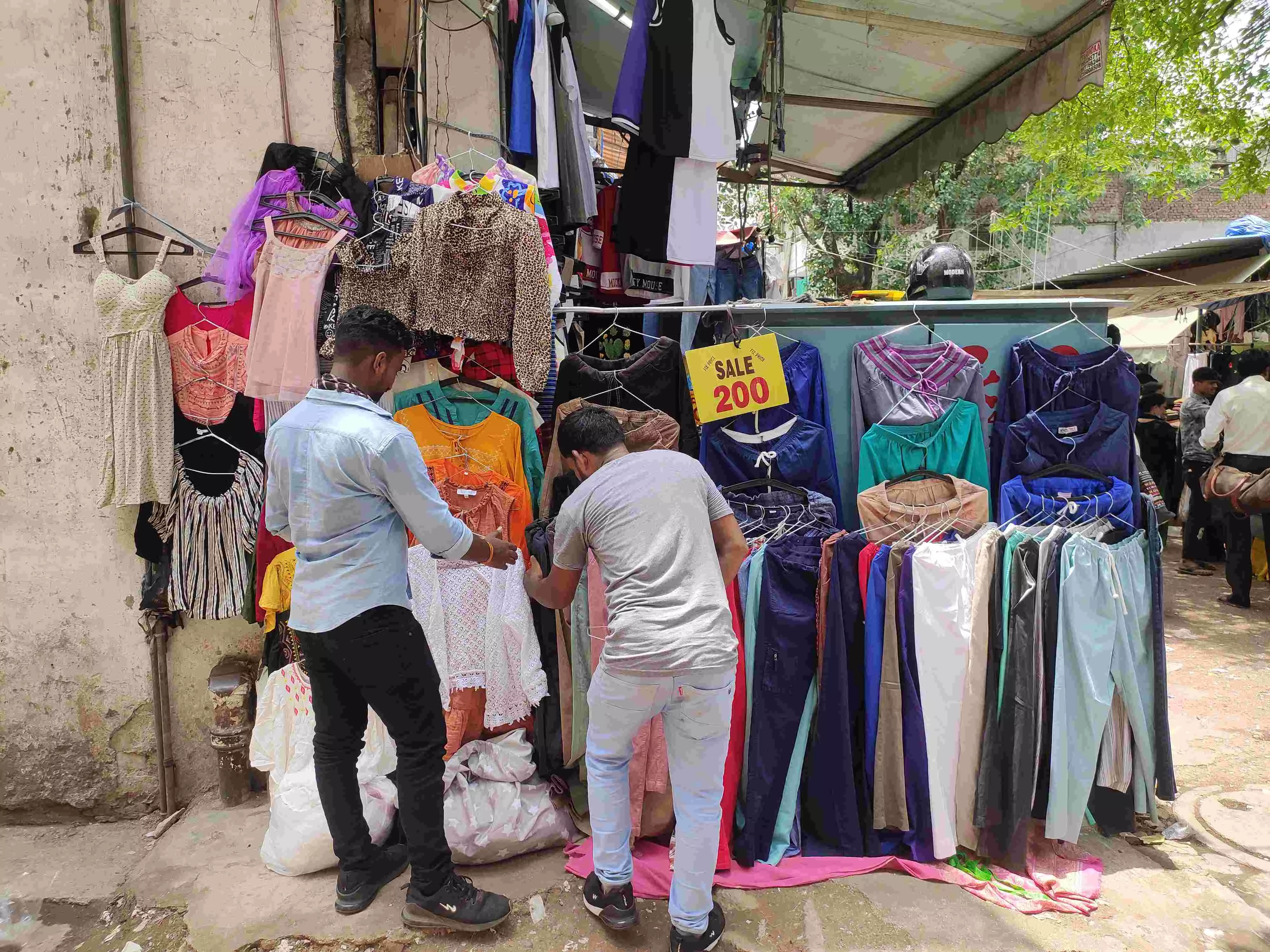
Agreeing that thrift store owners often sell whatever they buy from the market at an increased price, Sachin said that this doesn't really bother the vendors as they "end up earning profits. I don't think that we are missing out on something or are at a loss when stores buy our clothes and sell them online. These pages help promote us and our shops, and help us reach out to people across spaces and distances".
For sellers, online stores have brought in a sense of relief since they are able to sell and cater to a larger customer base within and beyond the borders of Delhi. "Buyers who don't live in Delhi or can't come here are still able to buy and wear our clothes because of such initiatives," said Yashwant.
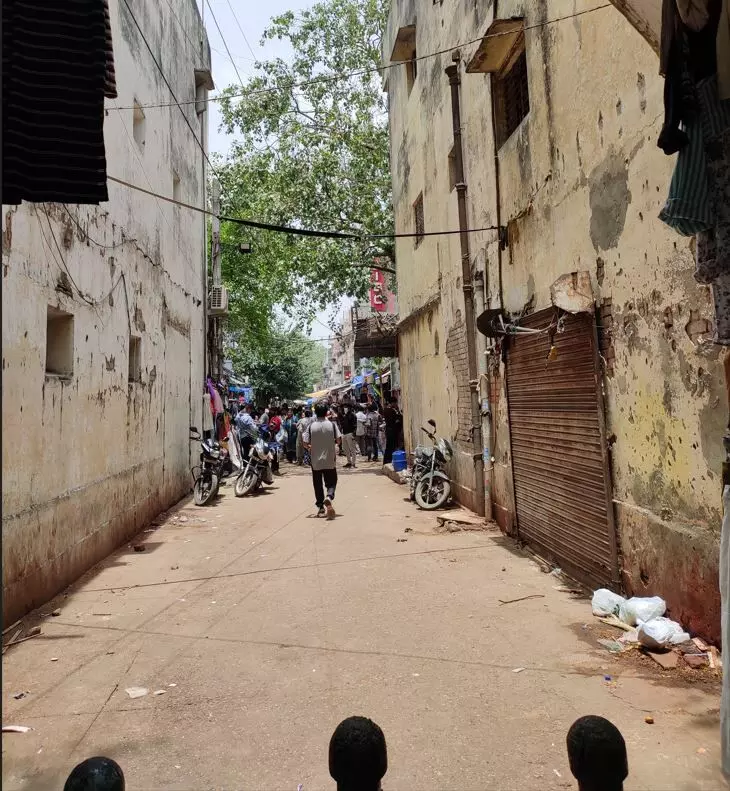
Chawla said that when he pitched the idea of digitising the market to the sellers, they were all supportive and accepting, "most of the sellers were not apprehensive of our idea since they knew that whatever we are doing it's for them. They trusted us with their garments because we were delivering it to all".
Shefali Sharma, who frequently visits the market to buy pieces for her thrift store Redicka Thrifts felt that digitisation helps widen the consumer base and makes Sarojini Nagar more accessible and reachable to people. "Online thrift stores help us as well as these vendors. Even though the initial motive of any venture might be to increase personal income, it ultimately helps and adds to the overall sales of the vendors too," she said.
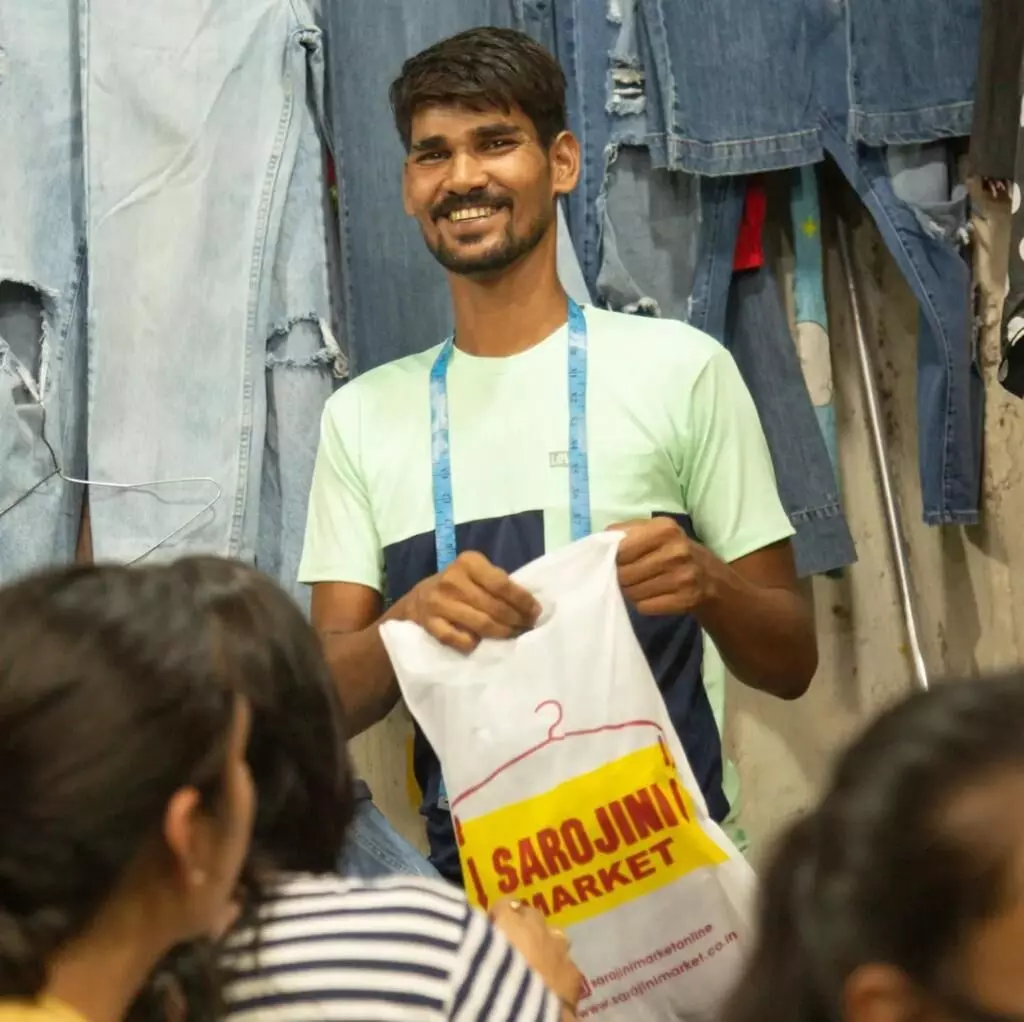
Another underlying factor which makes these online stores a hit amongst the sellers and the market is the 'ease of doing business' that it offers. Since Sarojini Nagar market is a flea market offering fashionable, trendy, and good products for cheap, bargaining and negotiation is a given. The sellers share that dealing with customers is a complex and exhausting process since they bargain a lot. However, they feel that with these online stores, everything gets easier as online store runners buy clothes in bulk, mostly at whatever price the sellers quote and end up increasing their sales.
Sachin felt that in today's time, social media is at the top and those who have access to the internet are succeeding, "things get easier when one has an active, strong presence on the social networking sites as it helps boost the business and optimise it to its full potential."
Yashwant has been selling in the market for more than 24 years now and has seen all the successes and failures of all sorts. Comparing the old and new times, he said, "over the years, the market got cleaner, spacious, and airy. Unlike old times, sellers and buyers both take care of the cleanliness of this place now."
However, most sellers here use plastic and polythene bags because they are inexpensive and easily available. Even though they know that it's not good for the environment, they say they have no option because of lack of resources. Many times the vendors are fined as much as Rs 5,000 for packing clothes in banned polythene bags. To combat this cloth and fabric bags were distributed in the market recently. According to Vandit who took the onus to distribute cloth bags in the market, "the vendors were happy and thanked us as it saved them money and also prevented them from using plastic. These bags are durable and can be used multiple times by the sellers as well as buyers."
According to Yashwant because of the distribution of these reusable cloth bags, "usage of polythene bags will decrease and we will be able to keep this market clean. More people will come to this place if it's kept neat and tidy."
Anyone who's been to the market before knows how iconic the Graffiti Lane is. No visit to the Sarojini Nagar market is complete without a visit here. However, the lane which was once covered with shirts and trench coats for sale stood barren and colourless for close to five months. Yashwant says, "vendors who used to display their garments on the walls of the Graffiti Lane were asked to vacate the space to limit the crowding of people in accordance with the Covid norms". As a result, people started throwing trash in the lane and it became a 'waste dumping ground'.
Vandit got the wall painted in red and yellow; symbolic to the square and rectangle yellow-red 'SALE' placards and boards which can be seen throughout the market. "The main reason for revamping the wall was to introduce an attractive element in the market that popped. The lane had never been renovated earlier," he said. The market now looks brighter and peppier. "Ever since the wall of the Graffiti Lane has been painted, more people have started coming because it has given the market a new vibe and it looks so clean and welcoming," said Sachin.
Yashwant added that the lane now looks fresh and new, "I feel nice that my little stall of trousers and pants is set up right in front of this freshly painted bright Graffiti Lane. It feels good because ever since the pictures of this lane have gone viral, a lot of people are coming to get their photos clicked in front of the wall. So, in a way my shop is also getting more attention and customers, and my sales are improving."
Sarojini Nagar market is one of the most visited markets of the country. The sellers are pleased with all that the younger generations are doing for them, especially during the pandemic years. For the sellers, it is a 'matter of pride' as their place of work, their home, their market attracts a lot of visitors from across the globe.
Grateful for what people are doing to support him and others, Sachin said, "A lot of youngsters not only sell our goods online, but also help publicise our shop and stall numbers on the internet. They are coming up with new ways and ideas to attract more customers to the market, if not physically, then at least digitally".
While the sellers are trying to update their stock and inventory regularly to offer new collections to the visitors and buyers, online thrift store owners like Vandit are planning to induct streetlights and place more dustbins in the market for the benefit of all. Yashwant added that sales for vendors like him will increase with the help of the internet and even though he hasn't digitised his shop yet, he might do so in future. However, Sachin has no plans of leaving the market and going completely digital. "I am satisfied here so even if I ever want to digitise my shop, I will collaborate in touch with existing online stores so that I am able to focus on my offline shop too," he said.
"This market is of and for the people and no matter what, customers will never stop coming here," said Yashwant, "Sarojini Nagar market is visited, and loved now more than ever."
Disclaimer: Vandit Chawla, owner of Sarojini Market Online who has been quoted is not related to the author in any way.



